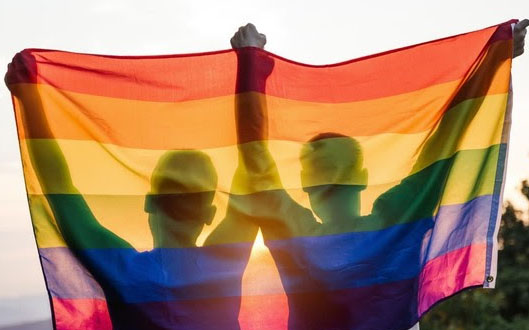A recent update to the Census Bureau’s twice-monthly Household Pulse Survey now indicates that LGBT adults are more likely to suffer from the economic and social impact of the coronavirus pandemic than their straight counterparts.
WASHINGTON, D.C. – It’s no secret that minority families nationwide were hit hard by the economic and social impact of coronavirus pandemic over the past 18 months.
Data recently acquired by the U.S. Census Bureau now makes it possible to gauge those effects on the Lesbian, Gay, Bisexual and Transgender (LGBT) community in America.
Those statistics are from the latest version of the federal Household Pulse Survey (HPS), which was digitally administered to about one million U.S. households on July 21.
Despite a commonly held belief that LGBT Americans tend to be more affluent than the norm, results from the HPS indicated that LGBT adults are actually more likely to report living in households with food insecurities and financial hardships than their straight neighbors.
Specifically, according to Census sociologist Tom File, about 13 percent of LGBT survey respondents lived in a household where there was often or sometimes not enough to eat in the previous seven days, compared to about 7 percent of non-LGBT adults in similar straits.
More than 36 percent of LGBT adults reported living in households that had difficulty paying routine expenses in the previous seven days, compared to about 26 percent of their straight neighbors.
Nearly 20 percent of LGBT adults lived in households that lost employment income in the previous month, compared to about 17 percent of non-LGBT adults.
Finally, about 8 percent of LGBT adults reported not being at all confident of their ability to make their next mortgage or rent payment on time, compared to about 6 percent of their straight neighbors.
Those statistics are realities for more than 100,000 LGBT Utahns, according to recent research by the Gallup research organization and the Williams Institute at the UCLA School of Law.
Their surveys between 2018 and 2020 suggested that about 3.7 percent of Utahns identified as being members of the LGBT community.
That translates to about 4 percent of the state’s workforce. Additionally, about 40 percent of LGBT adults aged 25 and over in Utah reported that they are raising children.
File explained that the Household Pulse Survey originated in April of 2020 as an experimental data collection effort by the Census Bureau to measure the impact of the coronavirus pandemic on American families.
While File added that previous versions of the real-time Census twice-monthly survey only gave respondents the option of identifying themselves as male or female, the new 3.2 version of the HPS questionnaire solicits more nuanced perceptions of participants’ gender identities.
Statistician Jason-Harold Lee explained that participants in the pulse survey are now asked to identify the sex they were assigned at birth (male or female) and then list whether they now describe themselves as male, female, transgender or none of those.
Survey respondent are categorized as LGBT if they report a sex at birth that does not align with their current gender identity; if they report a sexual orientation of gay, lesbian or bisexual; or if they identify as transgender.
Respondents whose sex at birth aligns with their current gender identity or select “Straight” on the questionnaire as categorized as “non-LGBT.”
Respondents are categorized as “Other” if they select “None of These,” “Something Else” or “I Don’t Know” on the HPS questionnaire.
HPS version 3.2 also includes topical questions exploring perceptions about COVID-19 immunizations and vaccine hesitancy for American adults and children between the ages of 12 and 17.

